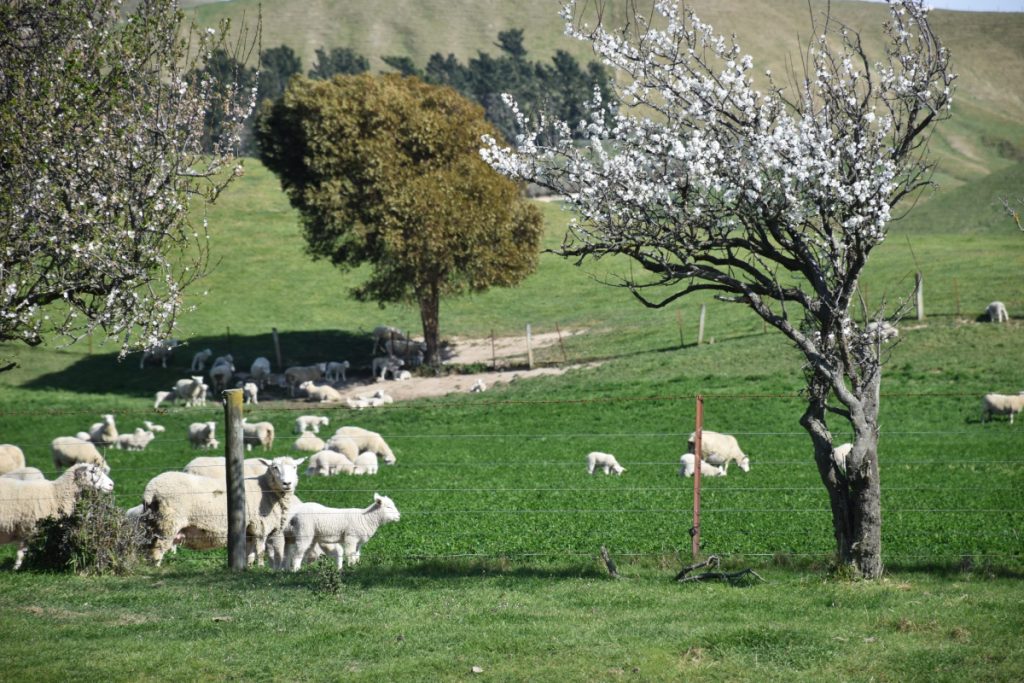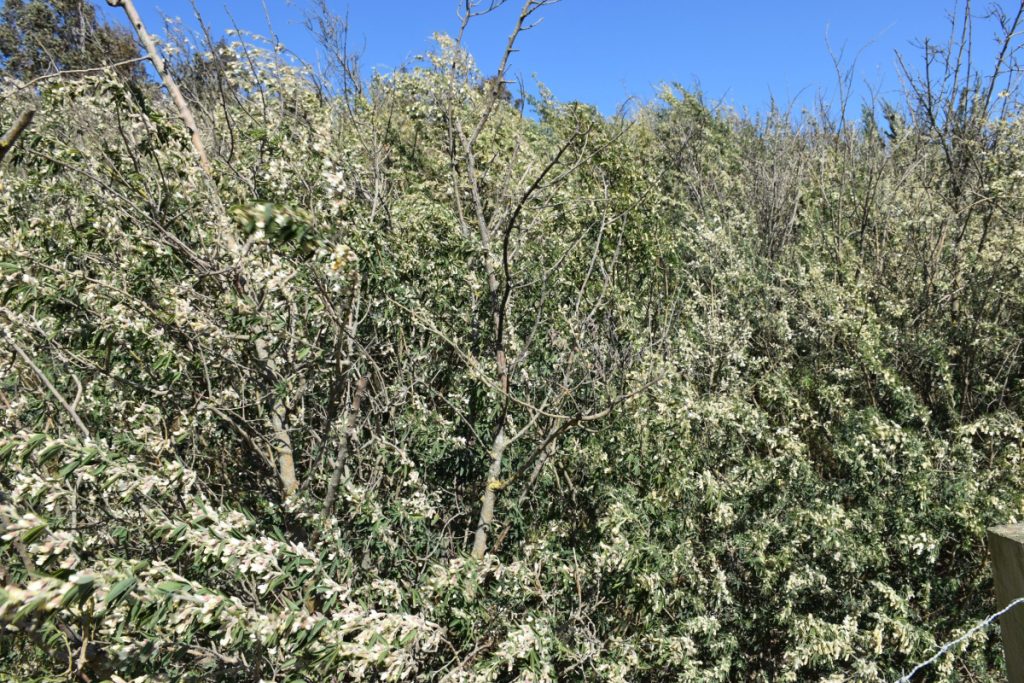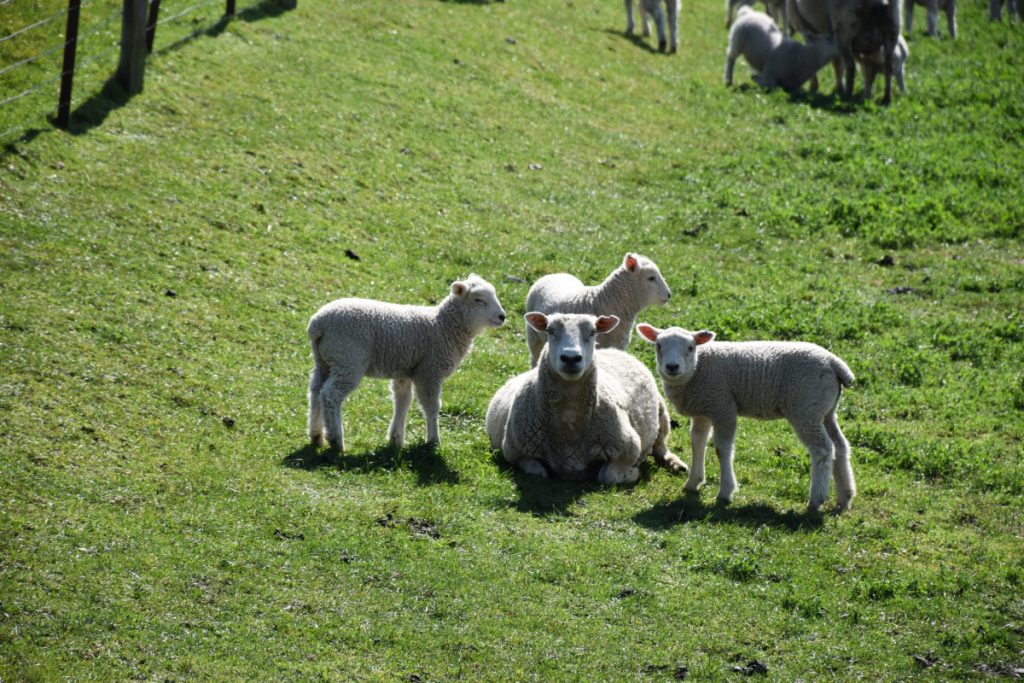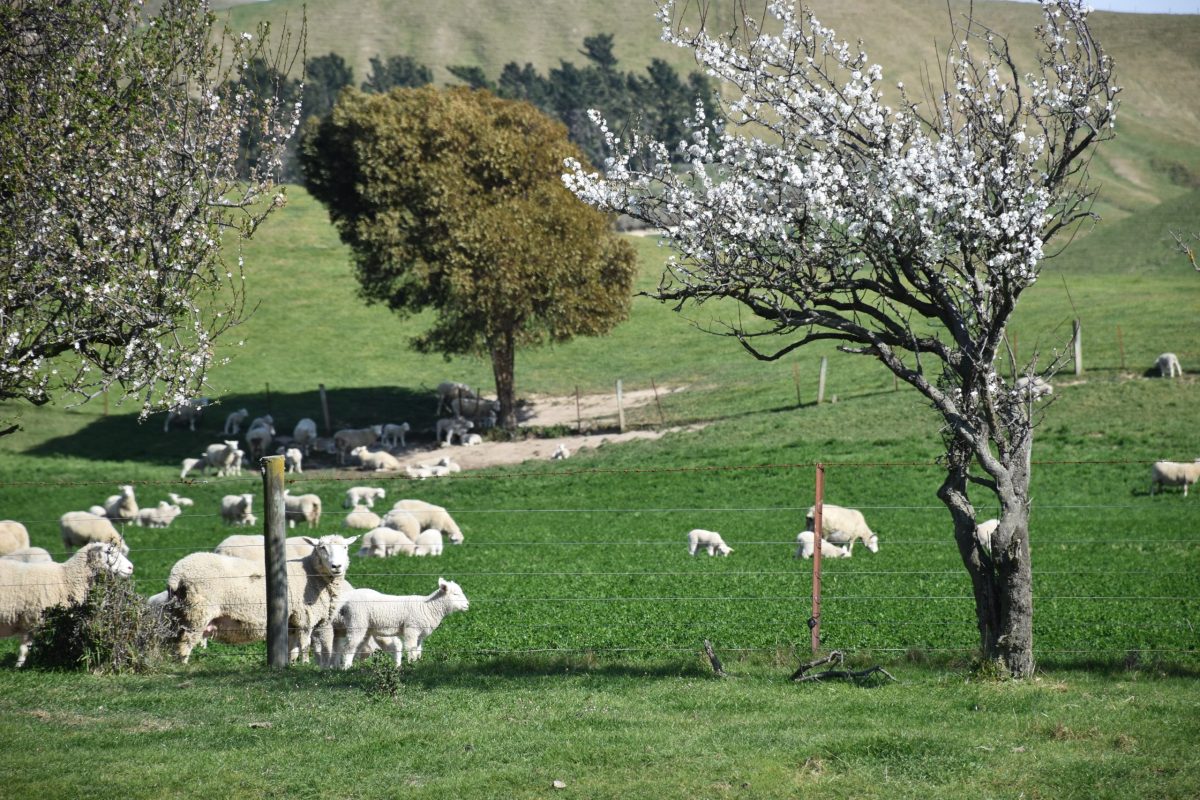This week we really welcome El Niño – strong westerlies and warm temperatures.
Prof Moot spent the weekend in Marlborough and visited ‘Bonavaree’ (Fraser Avery’s farm). There the ewes and lambs are happy munching on lucerne and the tagasaste, which can provide emergency feed during a drought, was in full flower. The Wither Hills have dried off and the evapotranspiration rate on Sunday would have been about 7 mm. The most pleasing sight as he drove north was the number of ewes and lambs grazing lucerne on other farms – and the lucerne was at the perfect height of 25-30 cm. However, the feed supply will quickly disappear without another 50 mm of rain – and even if that comes the westerlies will suck it from the soil within a week. So that means making sure any spring moisture is being used efficiently is important.


North Canterbury is beginning to dry off and the short, N deficient, grass that occupies too much of that land will produce 10 kg DM/mm of water and will not provide much nutrition beyond the end of the next month. Seed heads will arrive earlier in the grasses due to the warmer conditions and therefore pasture quality will rapidly deteriorate. The fact that the N deficient grass is losing water at the same rate as the lucerne, which is growing 2-3 times as much spring feed per mm of water used, still seems lost on too many farmers, or there would be even more legume growing. Before the soil dries to the point growth is restricted, the spring water use efficiency of lucerne is close to 30 kg DM/mm of water – while grass pastures with non limiting N grow about 20 kg DM/mm, so applying N should be considered if feed is short and rainfall arrives. A conservative cost benefit analysis would suggest working on a response rate of 10 kg DM/ha/kg N applied. Thus, if you are applying 50 kg N/ha as urea you can expect an extra 500 kg DM/ha. Whether that is cost effective will depend on the fertiliser price and ability to reduce stocking rates more quickly as the dry develops. The reason for having lucerne and red clover pastures is to ensure they can take full advantage of any spring/summer rain because they fix their own nitrogen – and therefore use that available water much more efficiently than resident grasses.

However, we can look at how this spring is developing to test farm systems. There is a perfect storm out there – farm working expenses have increased 16% on average over the last 12 months, much more than the rate of inflation, and farmers know product prices are low and could stay that way for the next 2-3 years. Those dryland farmers left with store lambs in January/February are likely to struggle to offload them unless Southland has a bumper spring and return to summer rain. This is definitely the year when pre-weaning feed needs to be maximised – and that means growing as much legume as possible. The sub clover on the hills needs another drink to fully express itself.
There are lots of issues for farmers to be thinking about. The farm systems that we have been advocating for the last 20 years are designed to cope with these situations, rather than the wet springs we have had over the last few years. NZ farming has been through the tough times before – the tax take will be down, rural spending will be down and the tightening financial conditions will affect the whole country in 2024. The rural sector is always the first to feel a down turn – but also the first to come out of it. If we have been successful many farmers will now have resilient dryland systems compared with a decade ago – and El Niño will be a challenge they farm though with tight belts but more confidence than in the past. And for those wanting to create more resilience to ‘summer dry’, our dryland pastures website has lots of advice on how to do that.
